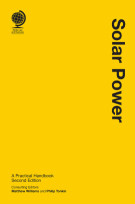
The world is getting richer. According to Henley & Partners’ Centi-millionaires Report, as of mid-2023 there were some 28,420 centi-millionaires in the world, that is individuals whose assets exceed $100 mn. By now there are no doubt more. That number includes of course 2,350 billionaires. And let’s not forget the merely wealthy, UHNW individuals whose assets exceed $30 mn. Real estate agents Douglas Elliman [New York-based] and Knight Frank in London team up annually to produce a Wealth Report. The 2024 edition estimates the global number of UHNWIs at almost 600,000. That may be a tiny fraction of the world’s population, but is it still an awful lot of people.
What has driven this explosion of wealth is in part asset inflation, especially of property, but is mainly the result of globalisation: of markets, of brands, of supply chains, and of consumer purchasing habits. With all that has come mobility of residency and nationality. The wealthy are, in effect, global citizens. Take the case of the Mittal family, owners of the world’s second-biggest producer of steel, Arcelor Mittal. The firm is headquartered in Luxembourg, but employs 100,000 people worldwide. The public record tells us that the founder and current Chairman, Lakshmi Mittal, was born an Indian citizen and has become a British national, at time of writing resident in the UK. Second-generation CEO Aditya Mittal was born in Indonesia, educated there and in England and the United States. He has Indian citizenship. Many such families, whose wealth derives ultimately from enterprises they control, will move across the world as the stages of family life dictate: educating their children at secondary schools in the UK, for example, and at elite universities in the United States. Add in multiple home ownership in multiple jurisdictions, and the need for highly-skilled professional advice is more pressing than ever.
So the issue of this second edition of Global Mobility of Ultra-High-Net-Worth Individuals is well-timed. The volume divides usefully into two sections. In the first are 24 country profiles, across Europe, North and South America, the Middle East and Asia-Pacific. Each one is compiled by legal specialists in their fields. They cover in great detail critical aspects of residency across each jurisdiction and reveal the traps that await the unwary and unprepared. Do not assume, for instance, that the trusts or tax planning created in the United States will hold up under French law and against the challenges of the Direction Générale des Finances Publiques (DGFIP). Or that the Swiss laws on taxation are uniform: in that country’s robust tradition of devolved democracy, taxation is in part a matter for each canton. It may make a material difference whether you are based in Zurich or Zug.
The second part of this volume is grouped by topic, and different national regimes are compared and contrasted as they affect the natural concerns of the wealthy. Thus succession is discussed at length, and the pros and cons of residence by varying jurisdiction. This is of primary importance to both family businesses and business families, whose current wealth is diversified across multiple asset classes. Numerous countries are now setting out their stalls to attract the UHNW population, while others, such as the current UK government, seem to be doing their level best to drive them away. This book is an excellent point at which to start assessing the available options, and will serve both practitioners and their clients alike.





